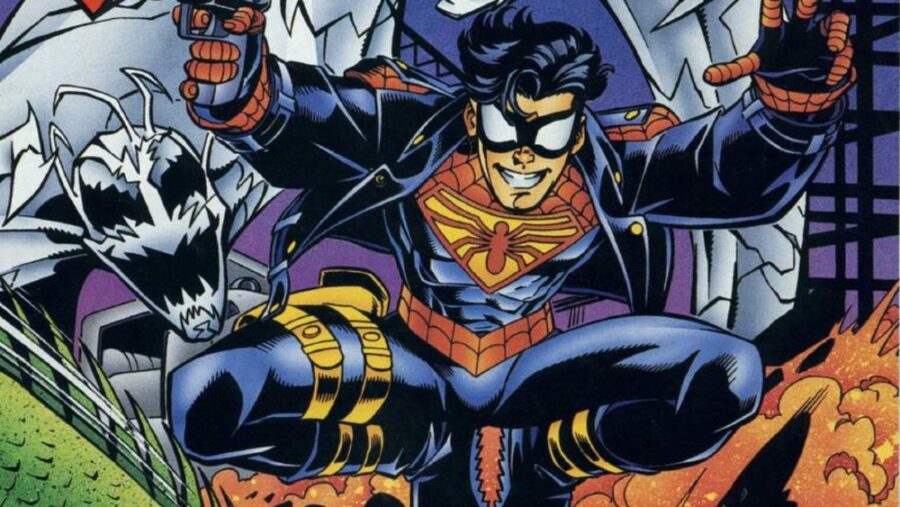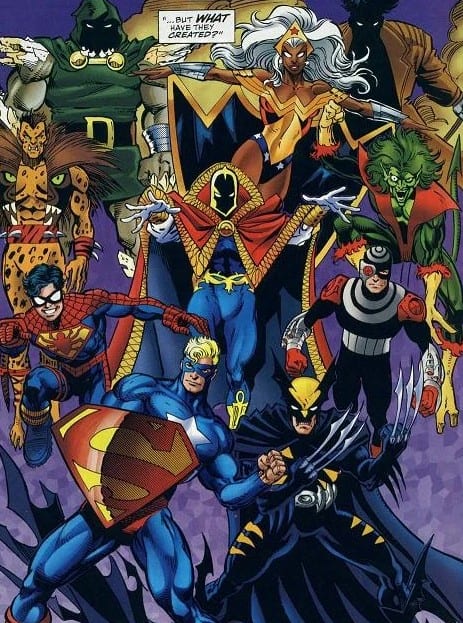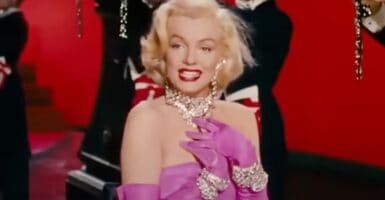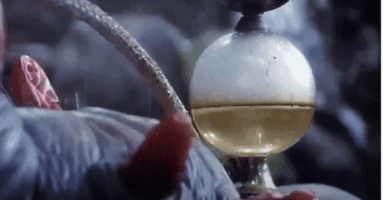Spider-Man: Across The Spider-Verse Cut This DC Hero Cameo

Amalgam Comics 1996
Across the Spider-Verse had so many cameos from alternate versions of Spider-Man that it’s hard to imagine any Spider-variants being left out. There was one Spider-Man, however, that did have to be cut due to a rights issue. Thanks to an X—formerly Twitter—post from Spider-Verse costume designer Kris Anka, we now know that Spider-Boy, a character owned in part by rival company DC, was originally set to appear in Across The Spider-Verse but couldn’t due to what Anka calls “legal law reasons.
If you’re scratching you’re head right now thinking, “Spider-Boy, is that anything like Superboy?” the answer is yes. In fact, it actually is Superboy… sort of.
The post was in response to a fan’s question about the authenticity of a piece of Spider-Verse concept art featuring a Spider-Man variant that looks an awful lot like the above-mentioned Spider-Boy. If you’re scratching you’re head right now thinking, “Spider-Boy, is that anything like Superboy?” the answer is yes. In fact, it actually is Superboy… sort of.
Spider-Boy was the result of a ’90s crossover event from Marvel and DC. Believe it or not, for most of their existence, DC and Marvel’s rivalry has been largely friendly. The two publishers first teamed up all the way back in 1976 with a Superman vs. The Amazing Spider-Man one-shot comic.
Concept art from Spider-Man: Across the Spider-Verse reveals Spider-Boy, a ’90s mash-up of Spider-Man and Superboy.
Since then, the two industry titans have crossed over periodically, including the DC Versus Marvel Comics miniseries from 1996 that featured a battle between personifications of the two companies as—what else—two giant titans.
The entities known only as “the brothers” were a pair of blue (DC) and red (Marvel) giants who pitted champions from their respective universes against each other to see which universe was superior. The storyline ended with a massive cataclysm where both universes merged into a single new universe, Amalgam Comics—owned equally by both Marvel and DC.
Anyone familiar with the making of Who Framed Roger Rabbit? knows what a pain it was to get Bugs Bunny and Mickey Mouse in the same movie together for even a minute-long scene.
In a fever dream of an event that could only have come from the late ’90s comic landscape, a bunch of mashup characters were created, including Super-Soldier, a mixture of Superman and Captain America, Darkclaw, a Batman merged with Wolverine, and of course Spider-Boy a cross between then Spider-Man Ben Reilly (a clone of Peter Parker) and DC’s Superboy, Conner Kent (a clone of Superman).

As a publicity stunt to sell comics, it was fairly genius. Imagine how mindblowing it would be to see Coke and Pepsi team up for a new flavor of soda, and you’ll get an idea of how crazy the Amalgam team-up was. Ultimately, the characters only appeared in a few books each, as Amalgam Comics didn’t last very long before heroes from each universe were able to convince the brothers to split the Amalgam universe back into the DC and Marvel universes.
Sadly, due to the unique co-ownership situation with all the Amalgam characters, none of them can show up anywhere without a deal between both DC and Marvel. This was one thing when it was just comics, but for the Spider-Boy version of Spider-Man to show up in Across the Spider-Verse would require an agreement between Warner Bros. and Disney—two not-so-friendly rivals.
Anyone familiar with the making of Who Framed Roger Rabbit? knows what a pain it was to get Bugs Bunny and Mickey Mouse in the same movie together for even a minute-long scene.
Add Sony into that mix due to the complicated situation with the movie rights to Spider-Man, and there was no way in hell that Spider-Boy was ever going to be able to appear in Across the Spider-Verse without a large sum money being handed over.
Considering the character would have only appeared for what amounted to a few minutes at the most, it’s understandable that Sony didn’t think jumping through a ton of legal hoops and emptying their pockets for a cameo that only a handful of geeks would even notice or understand was worth it.












